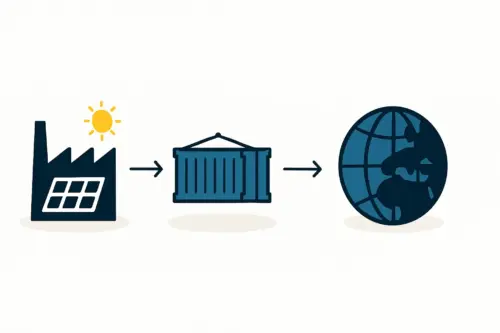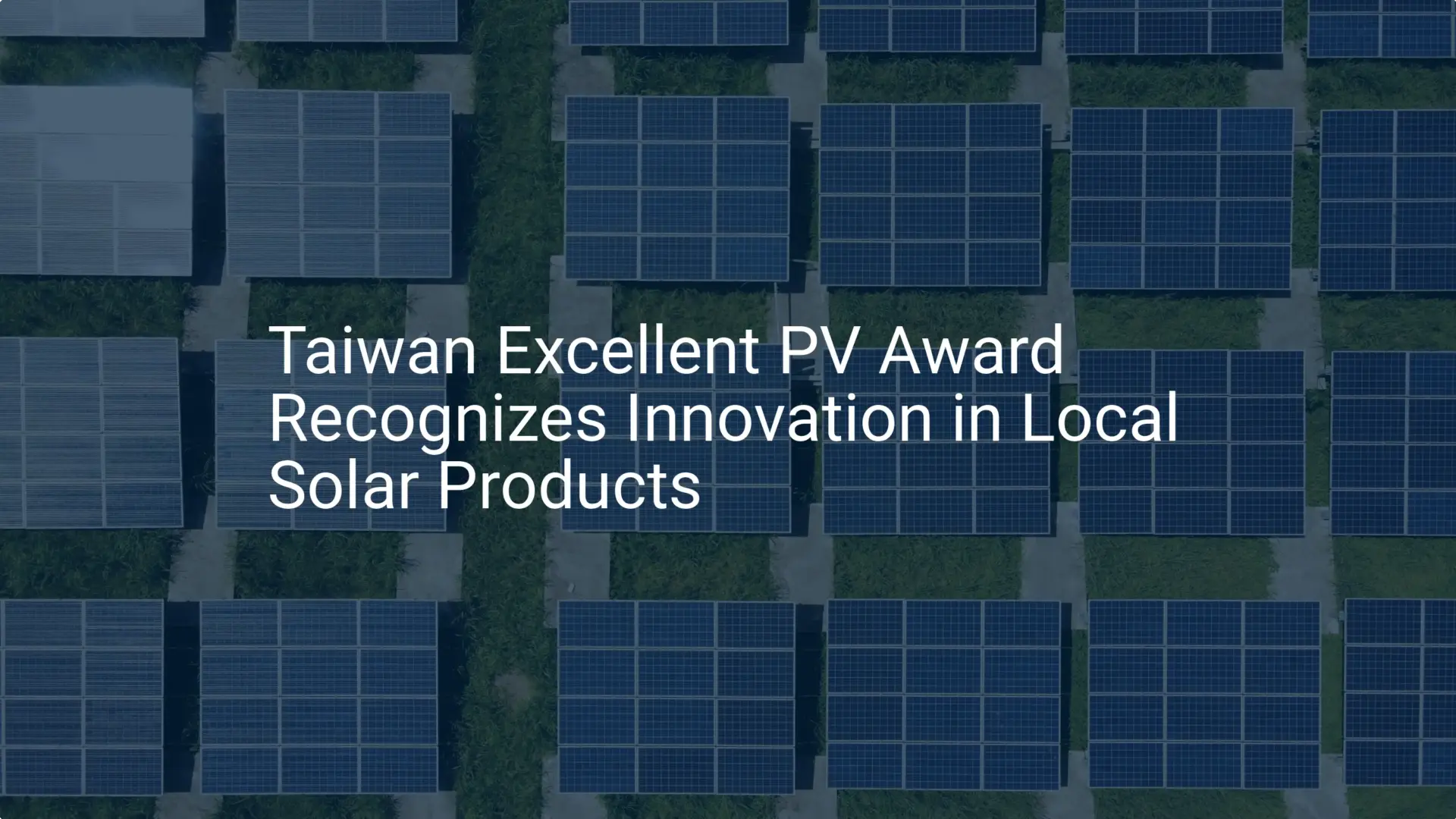Entrepreneurs entering the solar manufacturing sector often start with a global map, weighing the merits of different countries. For many, Taiwan stands out with its world-class technology ecosystem and reputation for high-quality production. However, the most critical decision is not if Taiwan, but where in Taiwan. The choice of industrial park can determine the operational efficiency, cost structure, and long-term success of a new solar module factory.
This guide offers a practical comparison of Taiwan’s key industrial and science parks, designed for business professionals seeking a strategic overview of the factors that matter most: infrastructure, logistics, supply chain access, and cost. Understanding these variables is the first step toward building a sound business case for a new manufacturing venture.
Foundational Criteria for Factory Site Selection
Before comparing specific locations, it’s essential to establish the core criteria for evaluating any potential site. For solar module assembly, four pillars are critical for success.
Logistics and Infrastructure
The movement of raw materials and finished goods is a defining operational cost. A factory’s proximity to international sea- and airports directly impacts shipping times and expenses, while direct access to major highways ensures efficient domestic transport.
Furthermore, reliable utilities like electricity and water are non-negotiable for a 24/7 manufacturing environment. In a high-tech region like Taiwan, this also includes high-speed data networks, which are crucial for modern, automated production lines.
Supply Chain Proximity
A solar module is an assembled product, reliant on a steady flow of components such as solar cells, glass, EVA films, and aluminum frames. Siting a factory near key suppliers reduces inventory holding costs, minimizes transportation risks, and fosters stronger technical collaboration.
Taiwan’s advantage lies in its dense network of electronics, semiconductor, and materials science companies that often serve the solar industry. Proximity to this ecosystem can accelerate problem-solving and innovation.
Labor and Talent Pool
A solar factory requires a diverse workforce, from skilled line operators and maintenance technicians to process engineers and quality control managers. The ideal location offers access to a qualified labor pool with experience in manufacturing or related high-tech fields. Proximity to universities and technical colleges also ensures a pipeline for new talent.
Land and Operational Costs
The cost of land—whether leased or purchased—is a significant part of the initial investment. These costs vary considerably across Taiwan. A thorough analysis must balance the price per square meter against the strategic advantages a specific location offers. Selecting a site based on cost alone is a common mistake, one that can lead to higher long-term expenses from poor logistics or a lack of skilled labor.
Comparing Taiwan’s Premier Industrial and Science Parks
Taiwan’s industrial development is concentrated in several key science and industrial parks, each with a unique character and set of advantages. The choice between them depends heavily on the factory’s specific business model.
Ready to make big Profits?
The solar Industry is Booming
WE HELP NEWCOMERS to the solar industry start their own solar module production line. Customers can make BIG PROFITS by selling modules and finding investors, without wasting money and time on things they don't need!
Hsinchu Science Park (HSP): The High-Tech and R&D Hub
Often called Taiwan’s ‘Silicon Valley’, HSP is the island’s premier center for semiconductor and electronics innovation.
Strengths: The park offers unparalleled access to a world-class R&D ecosystem and a highly educated talent pool from top universities like NCTU and NTHU. For a company focused on developing next-generation cell technology or highly specialized modules, the collaborative environment in Hsinchu is a significant asset.
Considerations: Land and labor costs in Hsinchu are the highest in Taiwan. Competition for skilled engineers is intense, driven by global semiconductor giants. This cost structure is often prohibitive for standard solar module assembly. The park is better suited for capital-intensive R&D or pilot production lines.

Southern Taiwan Science Park (STSP) – Tainan & Kaohsiung: The Manufacturing Powerhouse
The STSP has developed into a major cluster for optoelectronics and photovoltaics, hosting factories for industry leaders like AU Optronics (AUO).
Strengths: This park presents the most balanced and compelling case for most new solar module manufacturers. It offers a well-established PV supply chain, a large and experienced manufacturing workforce, and more competitive land costs than its northern counterparts. Crucially, its proximity to the Port of Kaohsiung, Taiwan’s largest container port, is a major logistical advantage for exporting finished modules.
Experience from J.v.G. turnkey projects shows that locating a factory within 50 kilometers of a major seaport can reduce inland logistics costs by as much as 15–20% annually—a substantial saving for a high-volume business.

Central Taiwan Science Park (CTSP) – Taichung: The Balanced Choice
Located in Taichung, CTSP leverages the region’s historic strength in precision machinery and automation.
Strengths: The park offers a strong industrial base and excellent transportation links through the Port of Taichung and the island’s main north-south highway. The local expertise in mechanical and electrical engineering is a distinct advantage for equipment installation, calibration, and maintenance.
Considerations: While growing, the dedicated solar industry cluster in CTSP is less mature than that of STSP. This may mean some specialized suppliers are located further away, slightly increasing supply chain complexity compared to the south.

Beyond the Obvious: Critical Local Factors to Consider
A strategic site analysis goes beyond simple comparisons of cost and distance. In Taiwan, unique environmental and regulatory factors must also be considered.
Seismic and Typhoon Resilience
Taiwan is located in a seismically active region and is prone to seasonal typhoons. Although industrial parks are built to high standards, it is vital to ensure that the specific site and factory building adhere to the latest structural engineering codes for natural disaster resilience. This is a critical step in mitigating risk.
Government Incentives and Zoning
Local governments often compete to attract investment in green energy sectors. Investigating potential tax incentives, R&D grants, or streamlined permitting processes offered by different park administrations is highly advisable. These can have a meaningful impact on the project’s financial projections.
Frequently Asked Questions (FAQ) for Site Selection in Taiwan
What is a realistic land area requirement for a 50 MW solar module factory?
A typical 50 MW per year solar module factory requires approximately 8,000 to 12,000 square meters. This area accommodates the production line, raw material warehousing, finished goods storage, quality control labs, and administrative offices.
Is it better to lease or purchase land in these industrial parks?
In Taiwan’s science parks, land is typically controlled by the government and offered on long-term leases (e.g., 50 years). This model reduces the significant upfront capital required to purchase land. In general industrial parks, both options may be available. Leasing is often preferred by new ventures to preserve capital for machinery and operations.
How does the local supply chain in Taiwan compare to mainland China?
Taiwan’s supply chain offers high quality, strong intellectual property protection, and excellent engineering collaboration. While the scale may be smaller than in mainland China, manufacturers in Taiwan benefit from shorter domestic lead times, stable quality, and close integration with the advanced semiconductor and materials industries. The choice often depends on whether the priority is lowest cost or highest quality and reliability.
Do these parks provide ready-built facilities?
Some parks offer standard factory buildings for lease. However, a solar module assembly line has specific requirements for ceiling height, floor loading, and cleanroom environments. For this reason, businesses more commonly lease the land and construct a purpose-built facility or undertake significant retrofitting of an existing shell. A detailed plan for the manufacturing process is necessary before finalizing facility decisions.
Conclusion: Making an Informed Decision
The optimal site for a new solar module factory in Taiwan is not a one-size-fits-all answer. The decision must be aligned with the company’s strategic goals.
For ventures focused on mass production and export, the Southern Taiwan Science Park (STSP) often emerges as the strongest candidate due to its mature solar cluster, excellent port logistics, and competitive cost base.
For businesses centered on cutting-edge R&D and specialized, high-efficiency products, the ecosystem of the Hsinchu Science Park (HSP) provides an unmatched advantage, despite its higher costs.
The Central Taiwan Science Park (CTSP) represents a solid, balanced option, particularly for companies that can leverage the region’s deep expertise in precision machinery and automation.
Ultimately, this initial analysis should be followed by a comprehensive feasibility study, including site visits and direct discussions with park administrations. Making the right location decision at the outset lays a stable foundation for a profitable and sustainable manufacturing operation.






